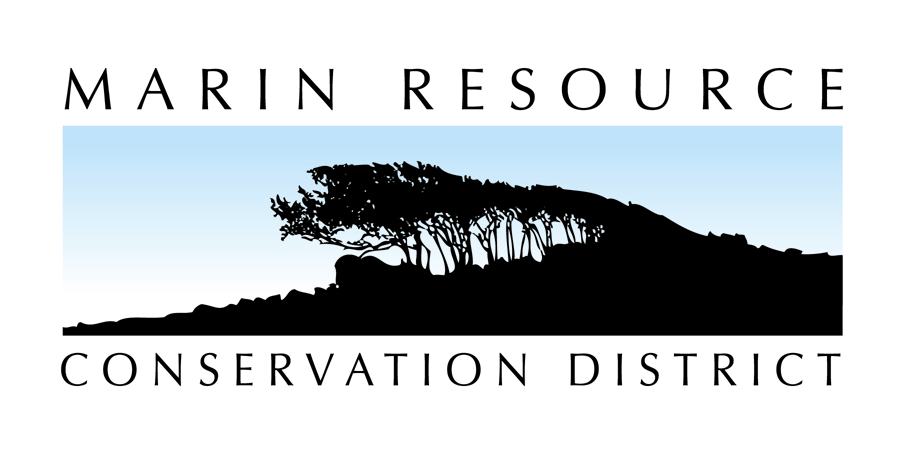Drought Assistance Information
What’s the drought situation in Marin County right now?
Much of the western United States, including Marin County, is experiencing serious drought conditions, which are projected to significantly worsen throughout 2021. 1 As of April 2021, Marin County has received only 41% of average rainfall, and public reservoir levels are barely half of typical levels for this time of year. 2 Producers are hard hit by this developing situation; several Marin and Sonoma County dairies have been importing water by truck since the fall of 2020 just to keep their animals alive. 3 Regional fresh vegetable production in 2021 could be cut by half due to lack of water. 4 Drought conditions and water scarcity is expected to worsen in the coming year. Marin County is currently (June 2021) at a D4 Exceptional drought level according to the US Drought Monitor. For more drought data and information, refer to the US Drought Monitor and Drought.gov web pages.
How can producers find resources to deal with the drought?
Producers are facing the challenges of drought and other climate-related impacts during a global pandemic, and are key to making sure we all have access to nutritious, local food during these intense times. In providing drought relief to Marin’s agricultural community, the Marin RCD and our partners are working to bolster a robust local food system and mitigate climate change. We are coordinating soil and water development projects, and working with our partners to provide producers with clear information and resources on short- and long-term drought relief. While Marin RCD currently does not have an immediate drought response funding program, we hope to provide information and links on this page so that producers can access ours and our partners’ services. Please find these below in the Resources section.
How can drought impacts be mitigated by climate-smart agriculture?
This drought is devastating for our agricultural sector, and it also represents the impact of climate change. 6, 7, 8 It is urgent to support local producers’ operational resiliency, which can be increased through climate-smart infrastructure and practices. 9, 10 For example, improving soil health is one of the paramount ways for producers to build regenerative systems that can withstand droughts and even start to reverse climate-related impacts. 11 Producers can improve soil health with no-till or reduced tillage, cover cropping, mulching, high-residue crop systems, compost applications, and more. 12 Healthy soils contain ample soil organic carbon, which can store up to ten times its weight in water and helps soil microorganisms build soil structure that increases water retention and helps to reduce erosion and run-off. 13 A quick statistic from NRCS shows soil health’s potential: “One percent of organic matter in the top six inches of soil would hold approximately 27,000 gallons of water per acre!” 14 The CDFA Healthy Soils program is one way producers can get help with cultivating healthy soils (Marin RCD can assist). Supporting producers in bolstering and adopting climate-smart infrastructure and practices is necessary for a resilient future!
Resources: Drought Mitigation for Producers
Immediate Needs & Funding
- Marin County Weights and Measures / Agricultural Commissioner is offering a cost share program for water purchase and hauling, made available to Marin County dairies.
- The USDA Farm Service Agency offers emergency disaster assistance programs. Visit fsa.usda.gov/disaster to determine eligibility.
Longer-term Needs & Funding
Construction of water developments, climate beneficial practices, and soil health projects:
- Contact Marin RCD if you need assistance with a CDFA Healthy Soils grant application or you would like to be put on our project list.
- MALT’s new Drought Resilience and Water Security (DRAWS) program is temporarily being made available to all farmers and ranchers in Marin County.
- USDA Environmental Quality Incentives Program (EQIP) provides funding for livestock water, expanding water systems; getting water to underutilized forage areas in addition to technical assistance.
- MALT’s SAP program will provide funding for stewardship projects and a larger cost share is offered to match NRCS or RCD projects.
Other Resource Pages
- Drought Resources for Marin and Sonoma (English)
- Drought Resources for Marin and Sonoma (Spanish)
- Drought Resources for Marin County Agriculture – County of Marin Dept. Of Agriculture, Weights, and Measures
- Drought Management – UCCE Marin
- Drought in Sonoma County – UCCE Sonoma
- Contact Your Local NRCS office
- CDFA California Drought Assistance


